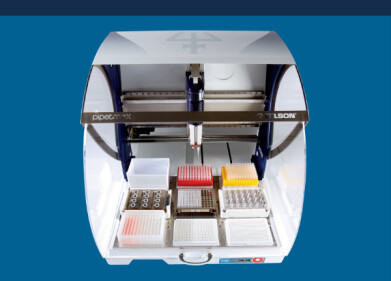Laboratory Products
How Was Drug Discovery Accelerated for COVID-19?
Mar 23 2021
The outbreak of COVID-19 in December 2019 caused far-reaching and highly-damaging repercussions all over the globe. Not only did entire industries come to a standstill and national populations become confined to their homes, but the death toll around the world soared into the millions. Countless more people have been hospitalised, many of them suffering lasting effects from the disease.
In a bid to curb the outreach of this deadly pandemic, the scientific community have sought to rapidly accelerate the search for a viable vaccine. The drug discovery and development process is normally one which involves tens of thousands of compounds, billions of dollars of investment and at least a decade of research, but thanks to the expedited approach to tackling the coronavirus, several vaccines have been produced in less than a year from the discovery of the disease. Here’s how such a remarkable turnaround was achieved.
All hands to the pump
Perhaps the biggest reason why a COVID-19 vaccine was arrived at in such a short time is the fact that it became the centre of focus for drug companies around the globe. With so much research and so many resources concentrated on one single area, it was inevitable that a treatment capable of subduing the disease would be found sooner rather than later. That’s in sharp contrast to the delays experienced by most other research projects, which are hampered by insufficient funding or precious resources being diverted elsewhere.
What’s more, the cross-collaboration between countries and the financial support of both national governments and international organisations like the WHO meant that the system was in place to accelerate the drug discovery and development process. Thankfully, it has resulted in not just one but several viable vaccines, which are currently in various stages of development and deployment.
Tech to the rescue
Even with such a collaborative and concerted approach to drug discovery being adopted by nations around the world, it’s unthinkable that similar results would have been reached in such a short space of time even as recently as 10 or 20 years ago. That’s because the technological advances made in the last decade or so have been so sizable that the way in which pharmaceutical companies and research institutes operate today has become almost unrecognisable from just a few years ago.
Major breakthroughs in this area have come from the sphere of artificial intelligence (AI), machine learning and automation. By incorporating these technologies into scientific investigations, scientists have been able to greatly improve both the efficiency and accuracy of their experiments, allowing them to produce more reliable results more quickly. The article Automating for Multi-omics Workflows for Drug Discovery and Toxicology has more information for anyone interested in this particular avenue of research.
Digital Edition
ILM 49.5 July
July 2024
Chromatography Articles - Understanding PFAS: Analysis and Implications Mass Spectrometry & Spectroscopy Articles - MS detection of Alzheimer’s blood-based biomarkers LIMS - Essent...
View all digital editions
Events
ACS National Meeting - Fall 2024
Aug 18 2024 Denver, CO, USA
Aug 25 2024 Copenhagen, Denmark
Aug 28 2024 Phnom Penh, Cambodia
Sep 04 2024 Chiba, Tokyo, Japan
Sep 04 2024 University of Warwick, Coventry, UK











24_06.jpg)






